Bold illustrations captivate with eye-popping colors and striking shapes that grab attention instantly. Artists like @elisafalchini_ blend vibrant hues with playful character designs, creating emotional impact through contrasting palettes. Modern illustrators draw inspiration from animation, tattoo art, and cultural themes, transforming ordinary concepts into extraordinary visuals. From Sam Twardy’s journey from grocery clerk to celebrated artist, to environmental storytelling through art, these ten cool drawing styles offer fresh perspectives for anyone seeking to shake up their art game.
Key Takeaways
- Bold illustrations with vibrant contrasting colors create stronger visual impact and emotional responses.
- Character designs featuring exaggerated shapes and playful elements enhance artistic storytelling.
- Mixed materials and unconventional techniques transform ordinary drawings into extraordinary visual compositions.
- Digital art communities offer daily challenges and style showcases for consistent practice and growth.
- Environmental themes in bold art use vibrant colors and playful elements to make serious topics more digestible.
Vibrant Color Palettes in Modern Bold Illustrations
When exploring the world of modern bold illustrations, one cannot overlook the power of vibrant color palettes that bring artwork to life.
Artists like @elisafalchini_ combine eye-popping hues with bold shapes to create designs that practically jump off the page! These striking color combinations aren’t just pretty—they’re strategic tools in graphic design.
Contrasting colors make illustrations super readable and way more engaging. Imagine a fiery orange character against a cool blue background—that visual pop grabs your attention instantly!
The coolest part? These bright colors tell stories and set moods without using a single word.
Today’s illustrators are constantly scrolling through social media for fresh inspiration, creating unique color combos that feel totally current.
In the competitive world of bold illustrations, a killer color palette isn’t just nice to have—it’s essential!
Character Design Trends in Animation-Inspired Tattoo Art
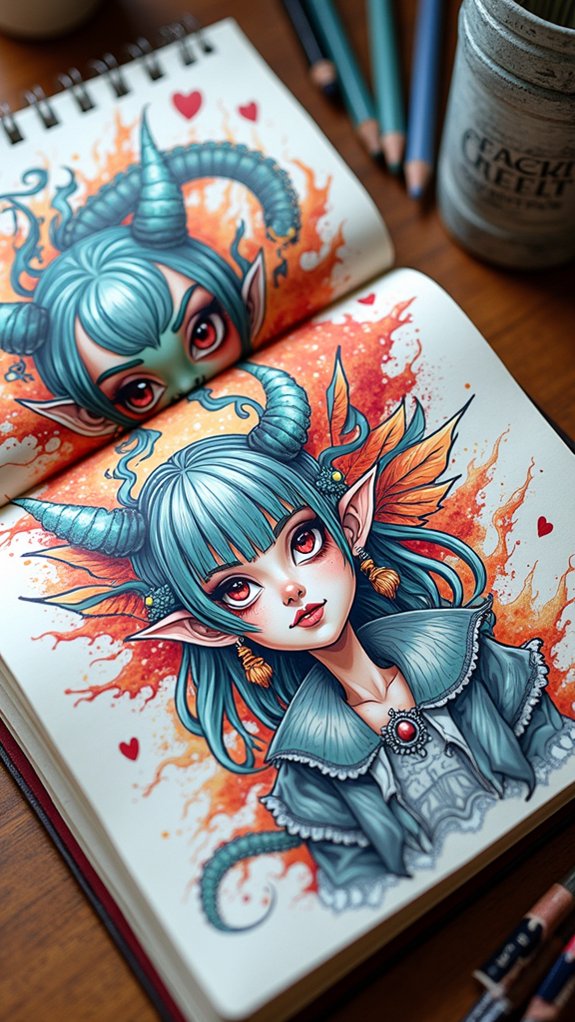
Character design in animation-inspired tattoo art has evolved dramatically, with artists now blending cartoon aesthetics with traditional tattoo elements to create unique, eye-catching pieces.
This fusion brings together the bold outlines of classic tattooing with the playful exaggeration of animated characters, resulting in designs that pop with personality and visual appeal.
Artists employ dynamic line techniques to convey motion and emotion, making static tattoos seem almost alive on the skin—a technique that has gained massive popularity on social media platforms where these vibrant designs thrive.
Animated Character Evolution
As animation has evolved over decades, the world of tattoo art has embraced these colorful characters with open arms. Graphic designers and tattoo artists alike have adapted bold illustration techniques from animated shows, creating stunning body art that pops with vibrant energy.
The evolution of these characters has led to increasingly bold designs that speak to a generation raised on cartoons and animated films.
| Era | Style Features | Popular Characters |
|---|---|---|
| 1970s | Simple outlines | Mickey Mouse, Fred Flintstone |
| 1990s | Bold colors | The Simpsons, Pokémon |
| 2010s | Detailed shading | Adventure Time, Steven Universe |
| Present | Hybrid styles | Anime fusion, Original characters |
Social media has supercharged this trend, with artists sharing their animated-inspired creations that reflect clients’ personalities in ways that feel both nostalgic and totally fresh!
Tattoo Style Fusion
The bold world of animation has crashed into tattoo artistry, creating an explosion of color and creativity on skin canvases everywhere! Tattoo artists are embracing animation aesthetics to design pieces that pop with life and personality.
These bold illustrations often feature exaggerated shapes, vibrant palettes, and playful character elements that tell stories on skin. Many illustrator-based designs incorporate humor and irony, making them relatable to audiences who love animated content online.
Artists like @elisafalchini_ showcase how traditional tattoo techniques can blend with modern cartoon styles for truly unique pieces. The rise of digital platforms has turned this fusion into a global trend, where tattoo enthusiasts share designs that combine their favorite animated characters with personal twists.
This exciting mix of old and new creates wearable art that’s both culturally relevant and visually unforgettable!
Dynamic Line Techniques
Through the artful dance of dynamic line techniques, animation-inspired tattoos leap off the skin with astonishing energy! Artists based in London have popularized this style, creating designs that seem to move and breathe with life.
The flowing lines capture characters mid-action, making even stationary tattoos feel like freeze-frames of an ongoing story. These vibrant designs help people express their playful side, with bold colors and exaggerated poses bringing cartoon-like qualities to permanent body art.
What makes these tattoos special is how they transform the body into a canvas for storytelling! Each piece of art combines fluidity and emotion, often incorporating ironic or humorous elements that mirror modern animation trends.
The result? Tattoos that aren’t just images but dynamic characters with personalities, ready to jump right off your skin!
From Grocery Store to Studio: Sam Twardy’s Creative Journey

Sam Twardy’s path from stocking grocery shelves to creating bold illustrations wasn’t a straight line, but rather a colorful journey filled with late-night sketching sessions after long retail shifts.
She often found unlikely inspiration between cereal aisles and produce sections, transforming mundane moments into vibrant artistic concepts that would later define her signature style.
These supermarket years weren’t just paying bills—they were secretly building the foundation for Twardy’s playful aesthetic that now captivates audiences with its bright colors and distinctive vectors.
Stocking Shelves, Sketching Dreams
Stacking cans by day and sketching vibrant worlds by night, New York illustrator Sam Twardy transformed her life from grocery store employee to celebrated artist. Her creative contrasts became evident as shelf reflections fueled her artistic aspirations during this pivotal change period.
Twardy’s journey from retail worker to full-time illustrator reveals how everyday experiences can shape a creative path. Her bold, vector-style illustrations emerged from this unique background, developing into the vibrant aesthetic she’s now known for.
What made Twardy’s change successful:
- Using retail downtime to sketch and develop ideas
- Building a distinctive style featuring flat illustrations and bright colors
- Gradually shifting from part-time to full-time creative work
- Openly sharing her journey to inspire other aspiring artists
Artistic Retail Therapy
Transformation became the heartbeat of Sam Twardy’s journey from grocery aisles to art studios. During long shifts stocking shelves, she found solace in visual journaling techniques, which eventually revealed the art therapy benefits of her doodles and sketches.
The vibrant colors and playful vectors that now define her signature style emerged from these moments of creative escapism.
It wasn’t just about drawing,” art critics note about Twardy’s evolution. “It was about rediscovering herself through illustration.”
Her bold, flat vectors speak to middle schoolers and adults alike, making complex emotions simple through accessible visuals.
Twardy’s experience shows how everyday jobs can inspire extraordinary art careers when you pay attention to what brings you joy—a reminder that sometimes the best artistic retail therapy happens when you’re not even looking for it.
Supermarket Muse Moments
- Observe everyday people for authentic character design.
- Study product packaging for color inspiration.
- Use quiet moments between customers to sketch ideas.
- Transform workplace frustrations into humorous illustrations.
This unconventional beginning shaped Twardy’s signature style—bold, playful illustrations that capture life’s quirky moments with flat vectors and bright colors.
It proves that artistic vision can develop anywhere, even under fluorescent supermarket lights.
Flat Vector Techniques for Playful Visual Storytelling
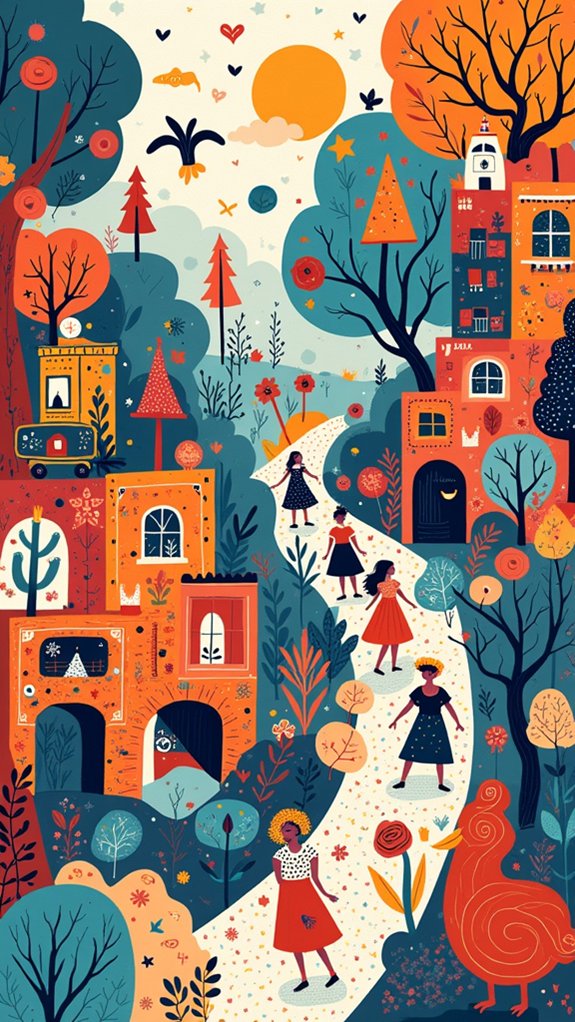
Simplicity packs a powerful punch in the world of flat vector illustrations. Artists like Sam Twardy harness playful simplicity to create bold designs that instantly grab attention. Using limited color palettes and basic shapes, these illustrators craft ironic narratives that speak volumes without saying a word.
The beauty of flat vector humor lies in its accessibility. Complex emotions and stories emerge from seemingly simple compositions, making them perfect for today’s fast-paced visual culture. When artists like @elisafalchini_ incorporate playfulness into their work, the results connect with viewers on a gut level.
This approach isn’t just artistic—it’s practical too! From magazine covers to brand logos, flat vector techniques have become go-to tools for designers who need their message to cut through the noise and stick in people’s minds.
Skateboarding Culture Through Bold Illustration Aesthetics
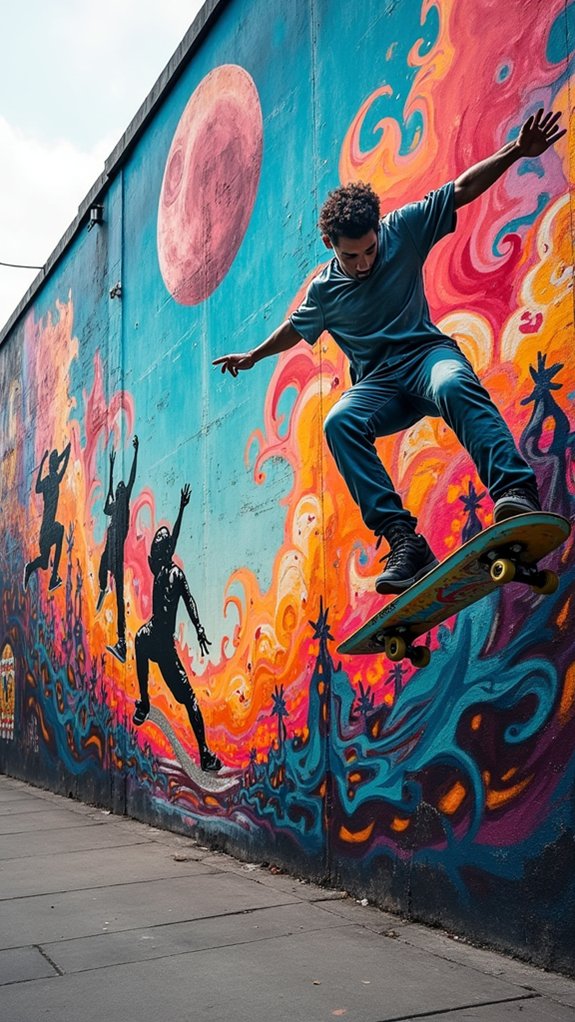
Every corner of skateboarding culture bursts with raw energy that artists have perfectly captured through bold illustration styles.
These vibrant artworks showcase urban settings where skaters practice their craft, from gritty street corners to colorful skate parks. The rebellious spirit of skateboarding shines through in these illustrations, with artists using flat, simple techniques to convey complex emotions.
Skate art transforms concrete playgrounds into visual anthems of rebellion through deceptively simple strokes.
What makes skateboard aesthetics so perfect for bold illustration?
- Dynamic movement – Artists freeze-frame awesome tricks mid-air
- Bright color palettes – Neon greens and electric blues pop against concrete scenes
- Ironic humor – Playful characters and situations that make you laugh
- Community vibes – Illustrations that show friends hanging out and supporting each other
Digital Art Communities as Sources of Daily Inspiration
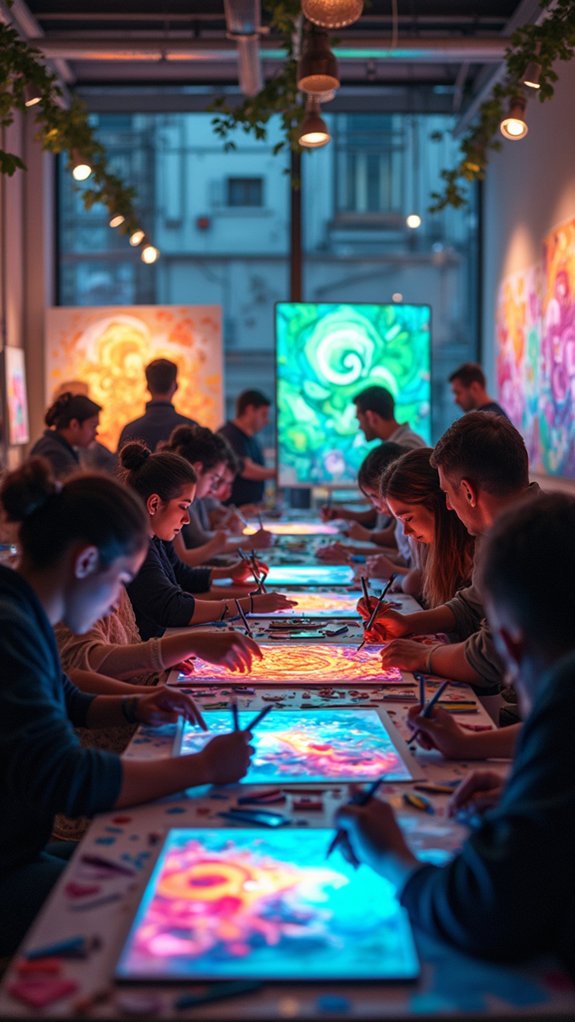
While artists sit alone at their desks creating bold illustrations, they’re actually part of something much bigger—digital art communities that buzz with energy every single day. Artists like @elisafalchini_ and Sam Twardy connect through platforms that turn solo creativity into community engagement.
| Community Features | Benefits for Artists |
|---|---|
| Daily challenges | Consistent practice |
| Style showcases | Recognition growth |
| Collaborative projects | Professional opportunities |
| Feedback exchanges | Skill improvement |
| Global connections | Cultural inspiration |
These digital art hubs aren’t just for scrolling—they’re creativity powerhouses! When artists share their bold vector illustrations or quirky character designs, they spark ideas that ripple through the community. The playful, sometimes ironic approach to digital art encourages everyone to push boundaries, turning individual inspiration into collective innovation.
Environmental Themes in Bold Artistic Expression
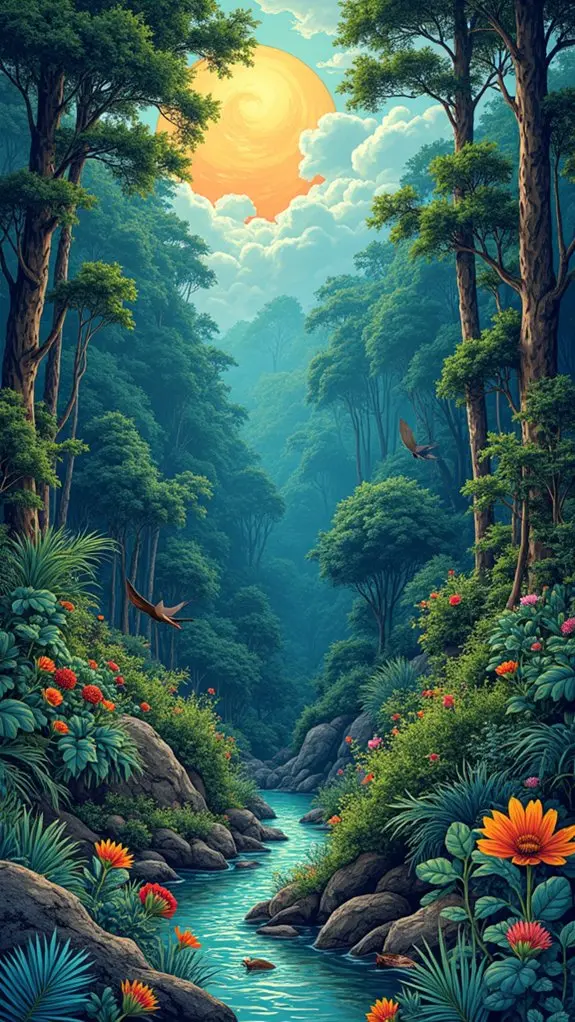
Bold illustrations have become powerful messengers for our planet’s most urgent stories. Artists are using eco-friendly motifs and nature symbolism to grab our attention and make us care about environmental issues.
When illustrators like Moxie Mason create works such as “Save the Earth,” they’re not just making pretty pictures—they’re engaging in artistic activism!
These bold environmental illustrations work because they:
- Use vibrant colors that pop off the page and demand attention
- Incorporate playful, sometimes ironic elements that make serious topics digestible
- Feature nature-inspired imagery that connects emotionally with viewers
- Bring artists together in collaborative projects focused on sustainability
Through these bold artistic choices, illustrators are turning complex environmental challenges into visual stories that even young viewers can understand and connect with.
Typography Integration in Illustration: Making Words Pop
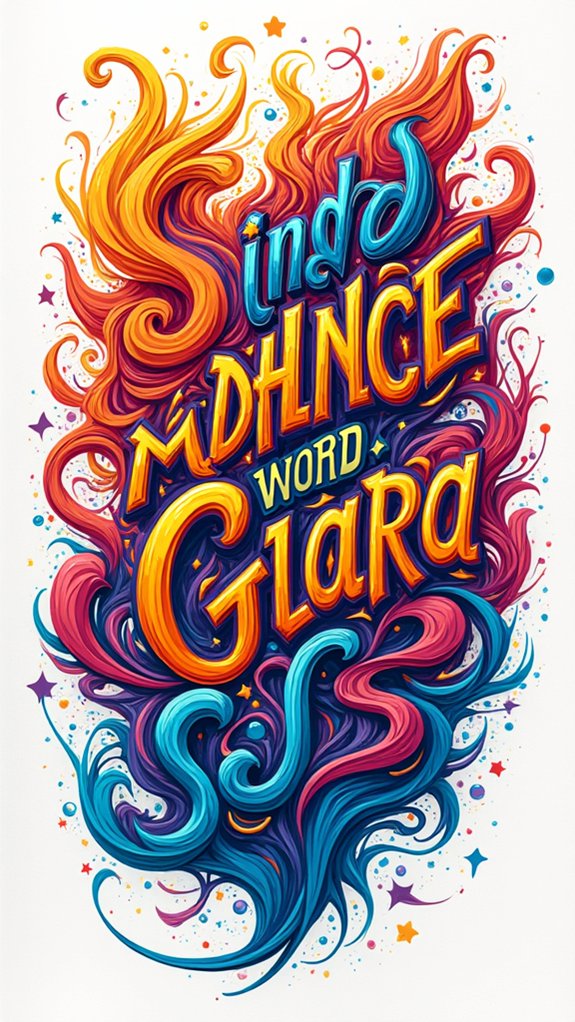
Typography isn’t just for reading—it can actually become part of the art itself!
When illustrators turn letters and words into visual elements, they transform ordinary text into exciting shapes that grab your attention and tell stories on their own.
The way an artist bends, stretches, or colors letterforms can speak volumes about the message they’re sharing, making the words practically jump off the page with personality and power.
Type as Illustration
When words and pictures join forces, magic happens on the page. Typography techniques transform ordinary letters into extraordinary visual elements that tell stories all on their own.
Artists like @elisafalchini_ show us how expressive lettering can become the star of the show, not just supporting characters in a visual narrative. Words don’t just say things—they can look like things too!
Cool ways typography becomes illustration:
- Letters morphing into shapes that represent their meaning
- Words flowing along paths that create secondary images
- Text sized dramatically to create visual hierarchy and impact
- Color and texture making letters pop off the page
This playful approach to text helps designers communicate complex ideas quickly, grabbing your attention and making you look twice.
It’s like the words are wearing costumes to the illustration party!
Letterforms Tell Stories
Letters transform into visual storytelling powerhouses when artists let them break free from plain text. Each curve and line carries letterform symbolism that speaks directly to viewers, turning words into experiences rather than just information. Typography emotions emerge when designers play with bold shapes and unexpected colors, making the message jump off the page!
Narrative typefaces do more than just communicate—they sing, shout, or whisper depending on their design. When artists integrate type with illustrations, magic happens! The words and pictures dance together, creating a unified story that’s way more exciting than either element alone.
Kids especially connect with these dynamic designs because they blend reading and viewing into one super-cool experience. This clever combination helps complex ideas stick in our brains, making typography a secret weapon in awesome illustrations.
Global Influences: From Jakarta Fashion to Italian Design
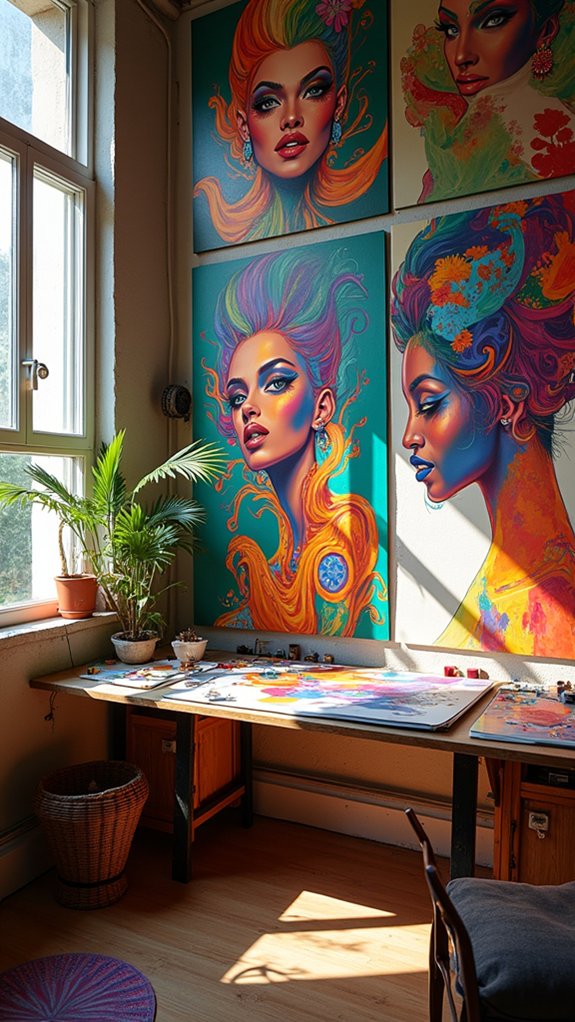
In the present interconnected world, artistic styles flow freely across borders, creating a rich tapestry of global design influences. Jakarta fashion merges with Italian design through collaborations like the Jakarta-based Liunic on Things brand, which brilliantly showcases how cultural exchange shapes contemporary illustration.
Artists like @elisafalchini_ from Prato, Italy bring unique perspectives with their playful, bold approaches, while Sam Twardy represents New York’s urban aesthetic through vibrant vectors.
Four key elements driving global artistic exchange:
- Fashion brands becoming platforms for illustrative expression
- Bold color palettes transcending cultural boundaries
- Urban influences shaping narrative techniques
- Environmental themes connecting diverse artistic communities
This artistic cross-pollination creates exciting new visual languages that speak to audiences worldwide, regardless of their cultural background.
Mixed Media Approaches for Distinctive Bold Art Styles
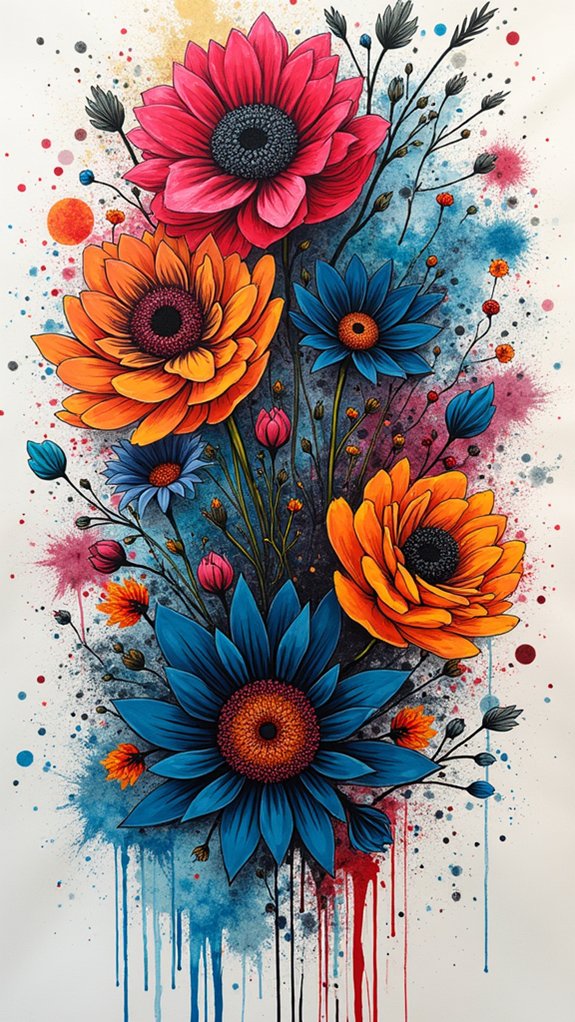
Mixed media approaches release boundless creativity for artists seeking distinctive bold styles that captivate viewers. By combining traditional painting with unexpected elements like fabric scraps, magazine cutouts, or digital components, artists create illustrations with jaw-dropping depth and texture experimentation.
The magic happens when these materials interact! Layering different mediums—like watercolor under collage under ink—creates narrative layering that tells stories in fascinating new ways. Artists stack materials to build visual worlds that pop right off the page, making viewers want to reach out and touch the artwork.
Contemporary illustrators often tackle cultural themes through these techniques, turning ordinary drawings into extraordinary visual feasts. This playful mixing of materials invites both creators and audiences to think outside the boring old art box!
Frequently Asked Questions
How Do I Develop My Own Unique Illustration Style?
Developing a unique illustration style requires experimenting with color theory, studying artistic influences while reinterpreting them, and practicing visual storytelling techniques until authentic expression emerges naturally through consistent creation.
What Drawing Tablets Do Professional Illustrators Recommend?
Professional illustrators commonly recommend Wacom products for precision, iPad Pro with Apple Pencil for versatility, and Huion tablets as budget-friendly alternatives with impressive specifications for digital art creation.
How Can I Overcome Creative Blocks When Developing Bold Illustrations?
Overcoming creative blocks requires regular creative exercises, exploring diverse inspiration sources, and engaging in artistic collaboration. These practices refresh perspective and stimulate innovative thinking for illustrators facing stagnation.
What Pricing Strategies Work Best for Selling Illustration Art?
Effective pricing strategies include tiered pricing models based on complexity, size, and usage rights. Thorough market research helps artists position their work, while building value perception justifies premium rates for illustration art.
How Do Copyright Laws Apply to Inspired Artwork?
Copyright laws recognize fair use exceptions but restrict unauthorized derivative works. Artists may incorporate artistic influence into their creations while respecting original creators’ rights to prevent infringement issues.
Conclusion
Bold illustrations continue to transform the art world, mixing vibrant colors, unique characters, and personal stories into eye-catching creations. Artists are pushing boundaries by blending typography, cultural influences, and environmental themes into their work. Whether you’re doodling in notebooks or designing digitally, these ten examples show that art has no limits. With a pencil, tablet, or spray can in hand, your next masterpiece is just waiting to happen!

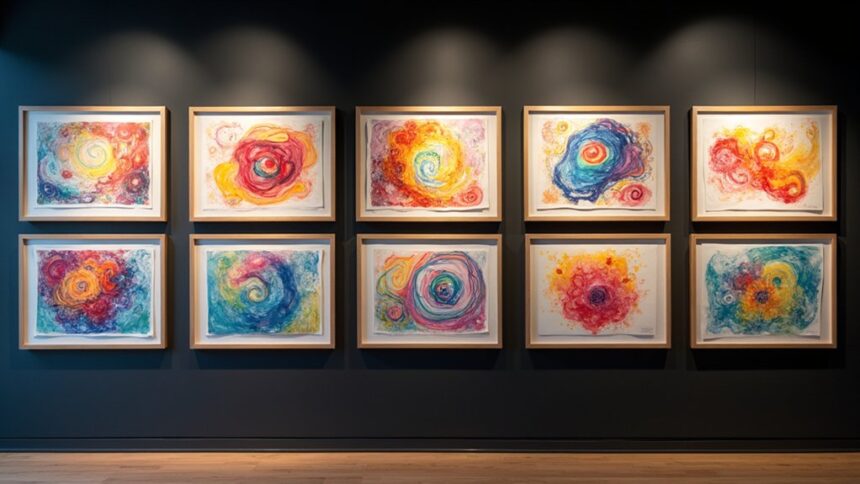
Leave a Reply